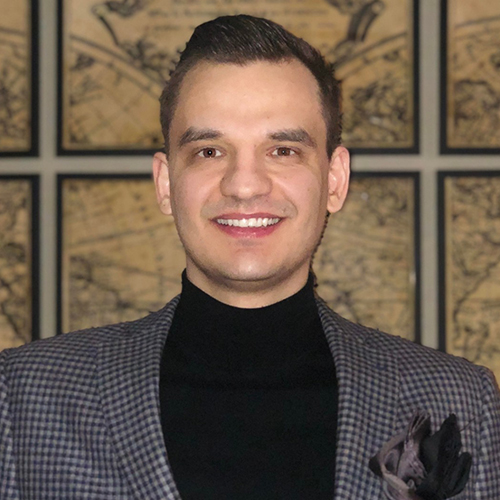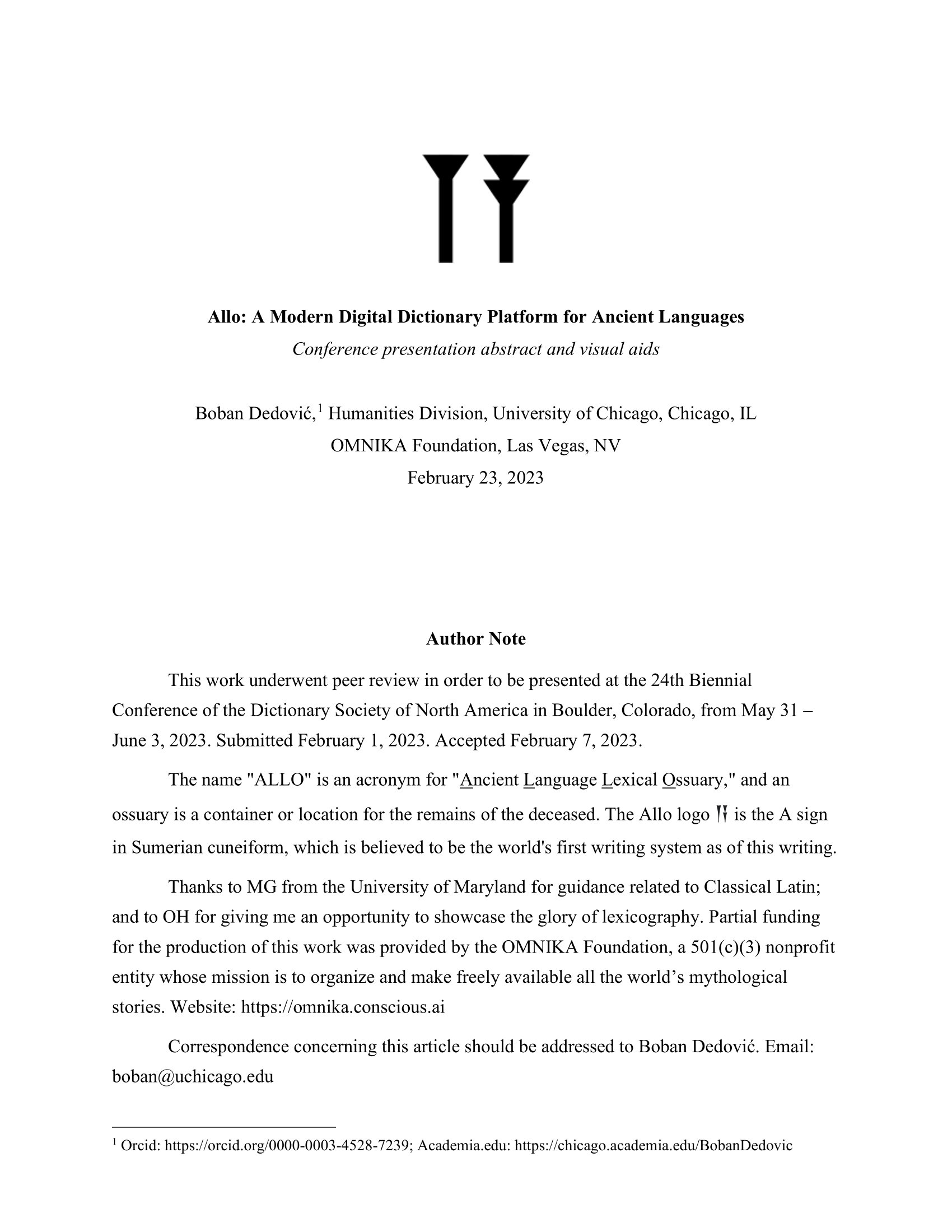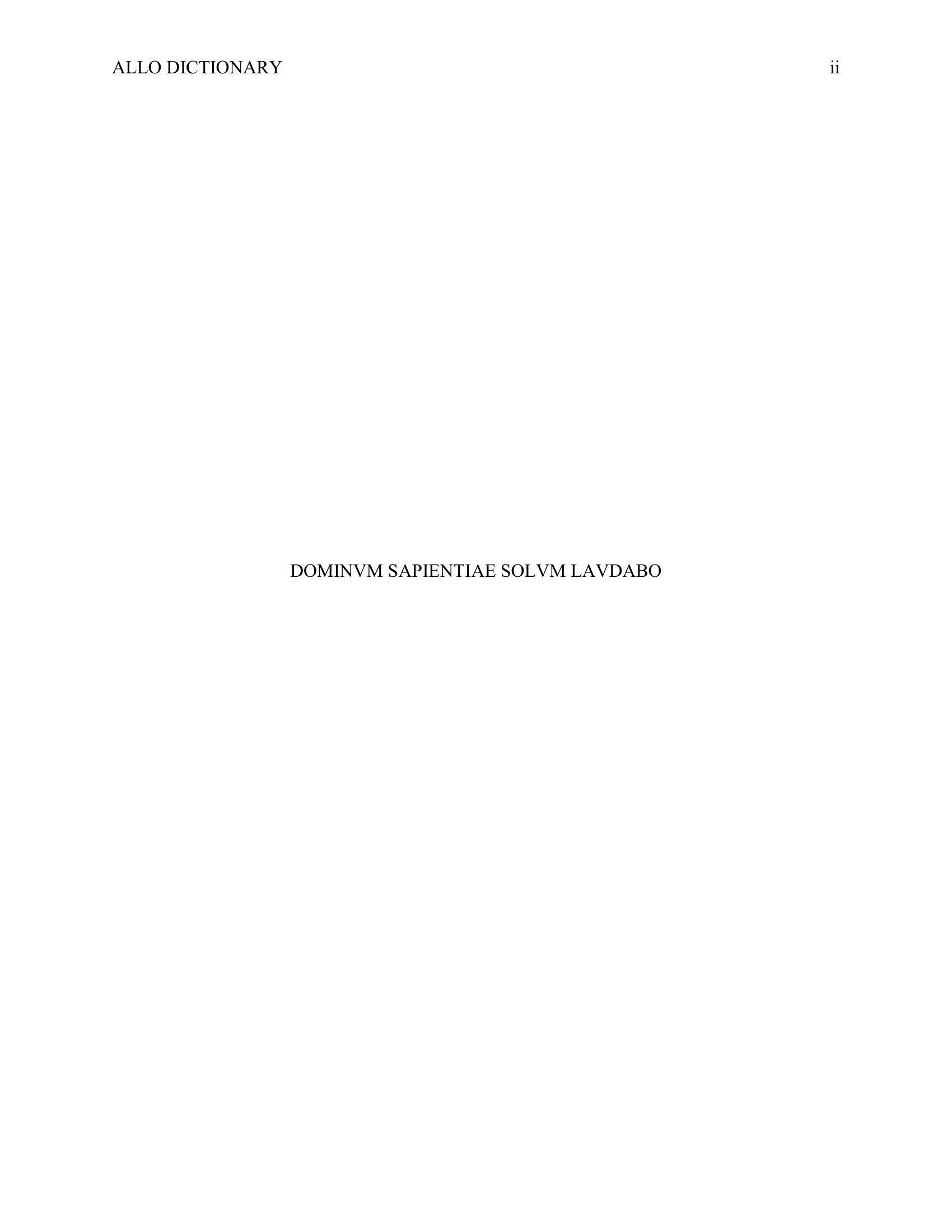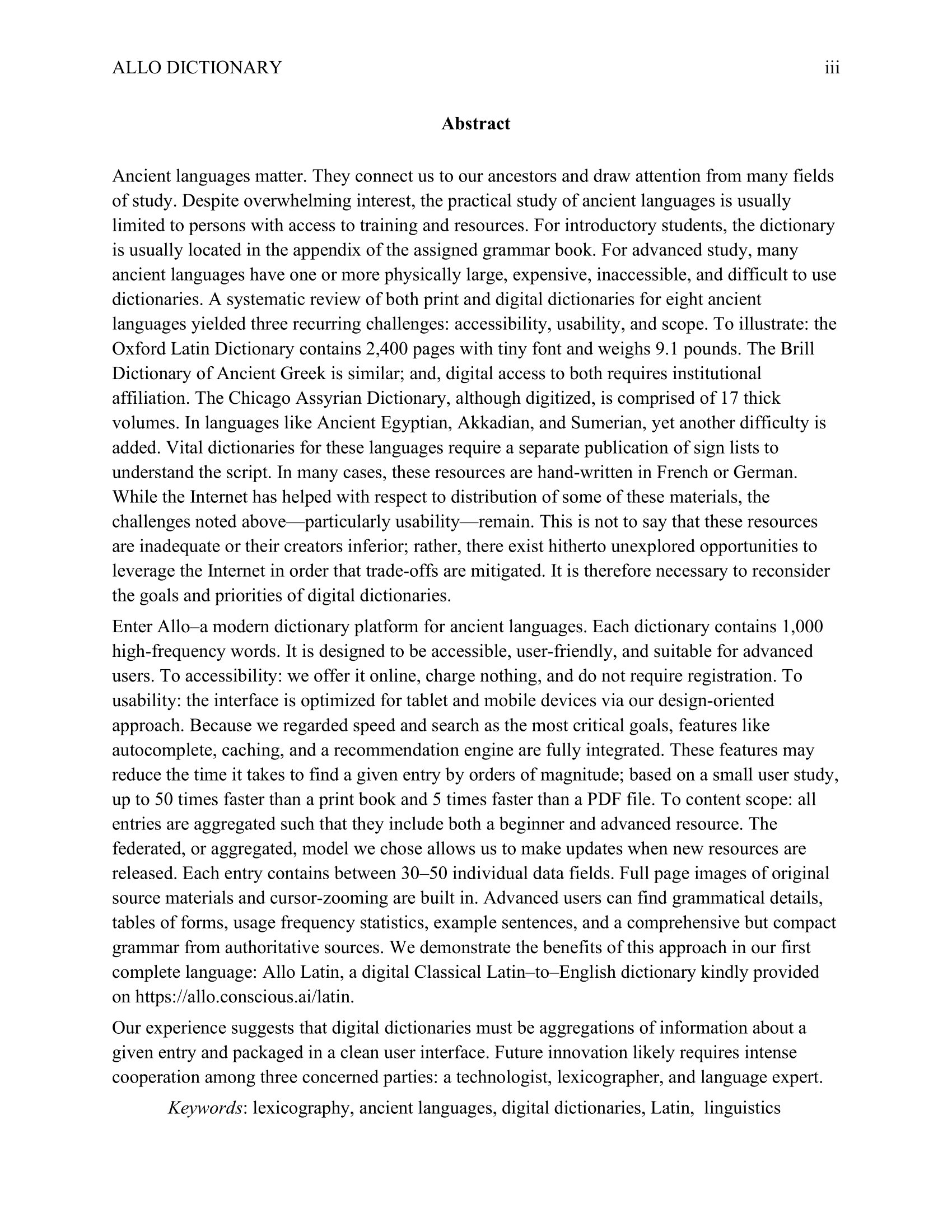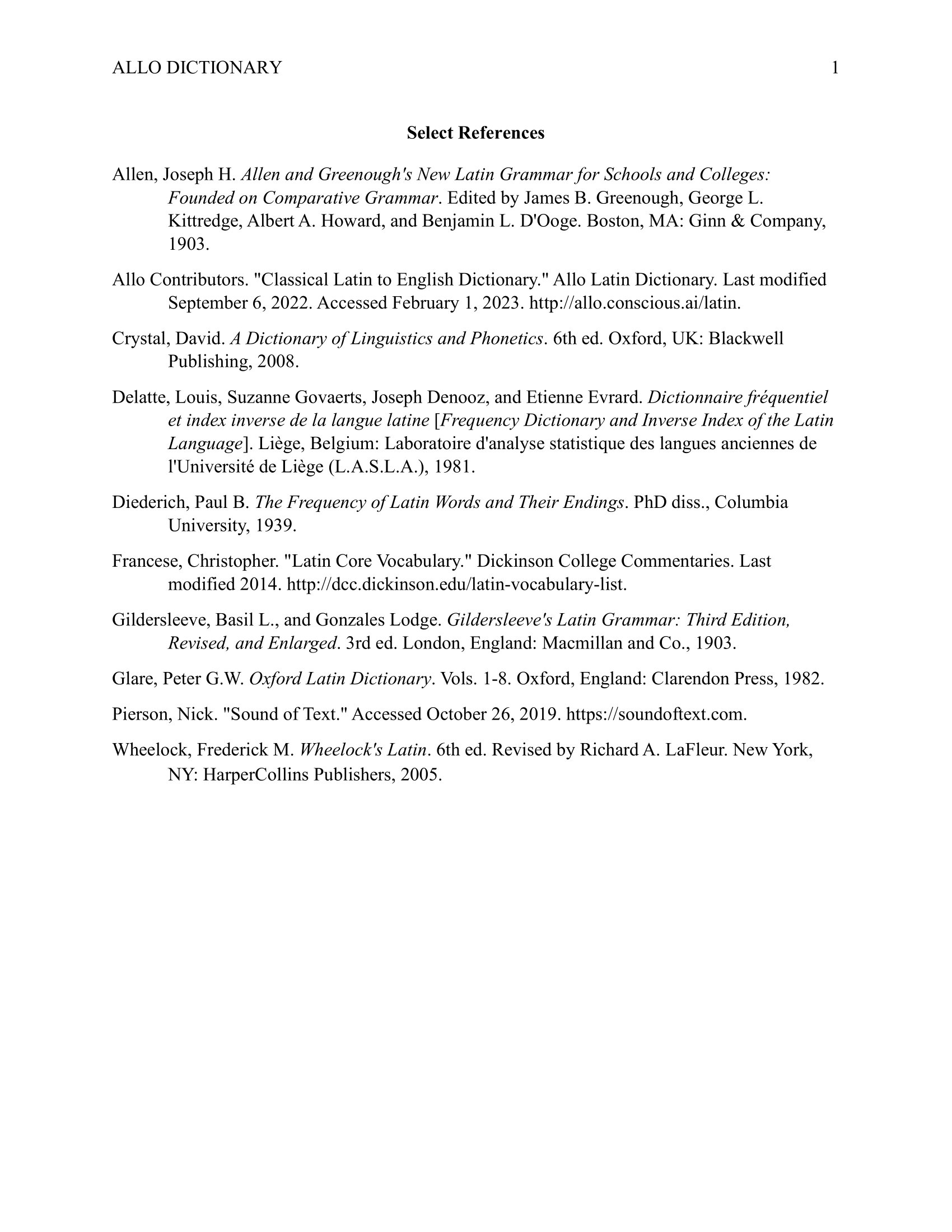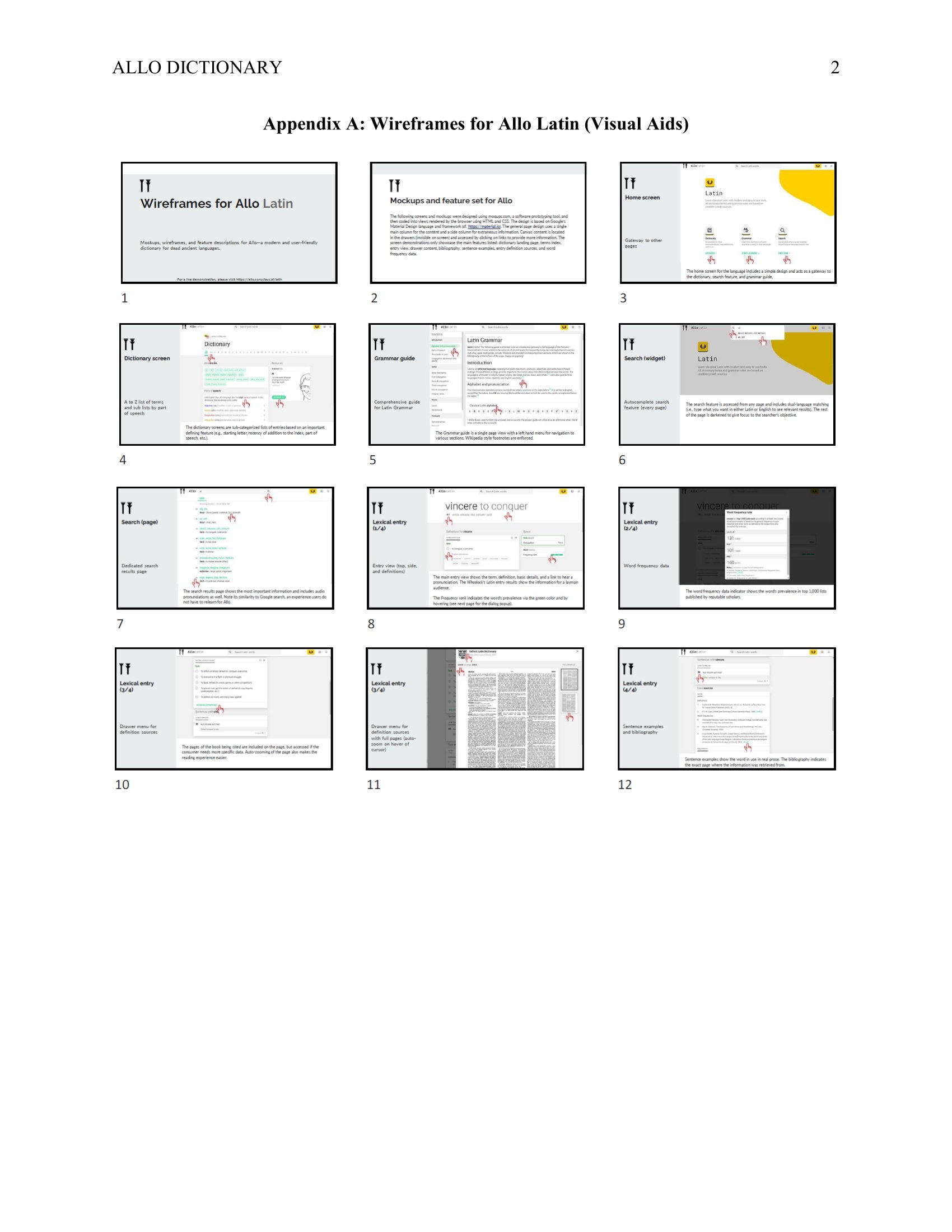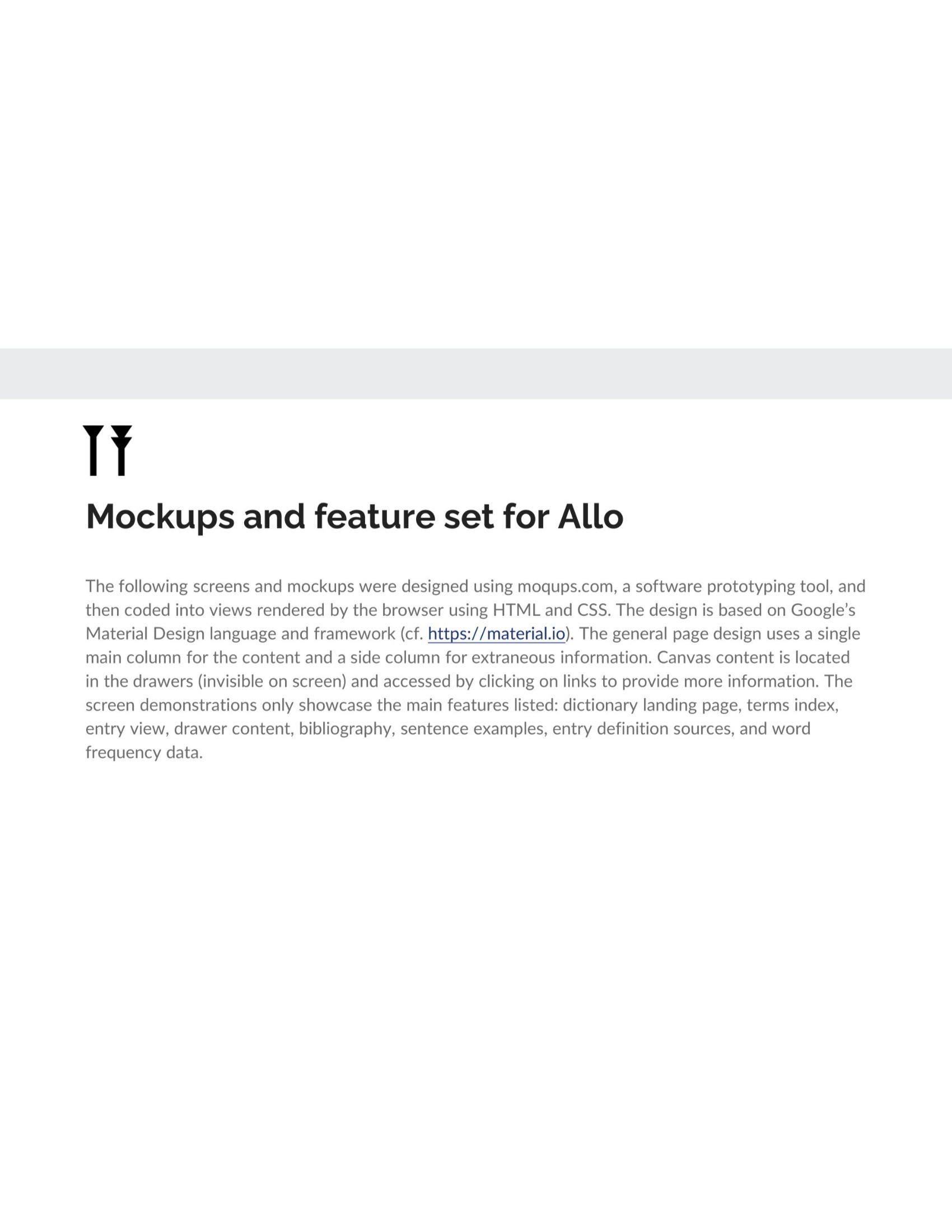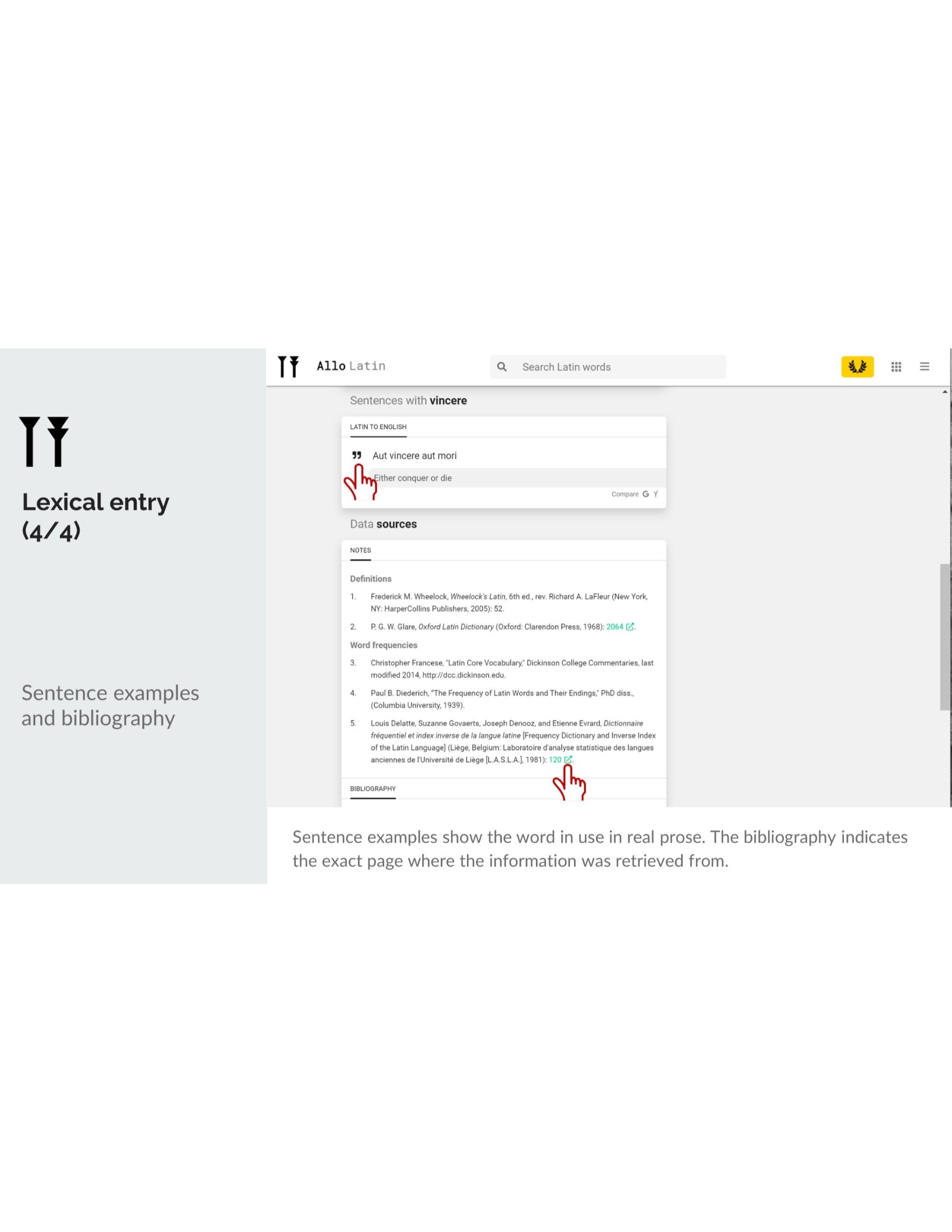About
This work is a conference paper by Boban Dedović concerning Allo Latin, a digital tool first presented at the 24th biennial conference of the Dictionary Society of North America in Boulder, CO, May 31 – June 3, 2023.
Source: OMNIKA
Abstract: Ancient languages matter. They connect us to our ancestors and draw attention from many fields of study. Despite overwhelming interest, the practical study of ancient languages is usually limited to persons with access to training and resources. For introductory students, the dictionary is usually located in the appendix of the assigned grammar book. For advanced study, many ancient languages have one or more physically large, expensive, inaccessible, and difficult to use dictionaries. A systematic review of both print and digital dictionaries for eight ancient languages yielded three recurring challenges: accessibility, usability, and scope. To illustrate: the Oxford Latin Dictionary contains 2,400 pages with tiny font and weighs 9.1 pounds. The Brill Dictionary of Ancient Greek is similar; and, digital access to both requires institutional affiliation. The Chicago Assyrian Dictionary, although digitized, is comprised of over twenty volumes. In languages like Ancient Egyptian, Akkadian, and Sumerian, yet another difficulty is added. Vital dictionaries for these languages require a separate publication of sign lists to understand the script. In many cases, these resources are hand-written in French or German. While the Internet has helped with respect to distribution of some of these materials, the challenges noted above—particularly usability—remain. This is not to say that these resources are inadequate or their creators inferior; rather, there exist hitherto unexplored opportunities to leverage the Internet in order that trade-offs are mitigated. It is therefore necessary to reconsider the goals and priorities of digital dictionaries.
Enter Allo–a modern dictionary platform for ancient languages. Each dictionary contains 1,000 high-frequency words. It is designed to be accessible, user-friendly, and suitable for advanced users. To accessibility: we offer it online, charge nothing, and do not require registration. To usability: the interface is optimized for tablet and mobile devices via our design-oriented approach. Because we regarded speed and search as the most critical goals, features like autocomplete, caching, and a recommendation engine are fully integrated. These features may reduce the time it takes to find a given entry by orders of magnitude; based on a small user study, up to 50 times faster than a print book and 5 times faster than a PDF file. To content scope: all entries are aggregated such that they include both a beginner and advanced resource. The federated, or aggregated, model we chose allows us to make updates when new resources are released. Each entry contains between 30–50 individual data fields. Full page images of original source materials and cursor-zooming are built in. Advanced users can find grammatical details, tables of forms, usage frequency statistics, example sentences, and a comprehensive but compact grammar from authoritative sources. We demonstrate the benefits of this approach in our first complete language: Allo Latin, a digital Classical Latin–to–English dictionary kindly provided on https://ancientlanguages.org/latin.
Our experience suggests that digital dictionaries must be aggregations of information about a given entry and packaged in a clean user interface. Future innovation likely requires intense cooperation among three concerned parties: a technologist, lexicographer, and language expert.Source: Author or Publisher
expand_more Read more Read less
Access
Read for free
External sources
Other works
Conference paper · 2023
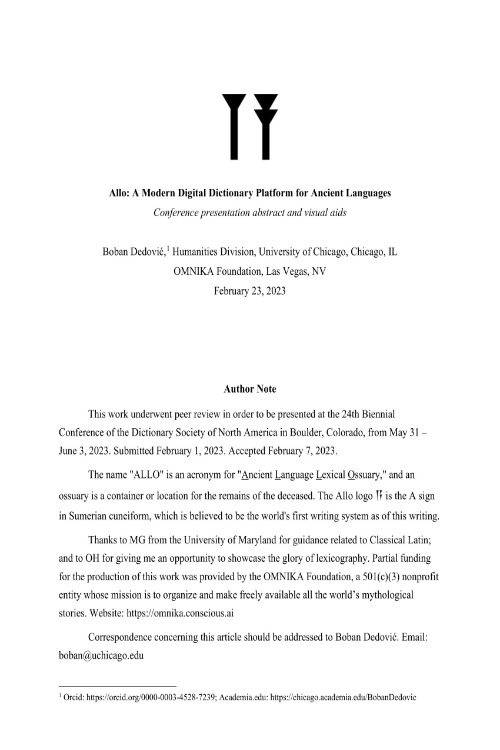
This work is a conference paper by Boban Dedović concerning Allo Latin, a digital tool first presented at the 24th biennial conference of the Dictionary Society of North America in Boulder, CO, May 31 – June 3, 2023.
Preprint · 2023
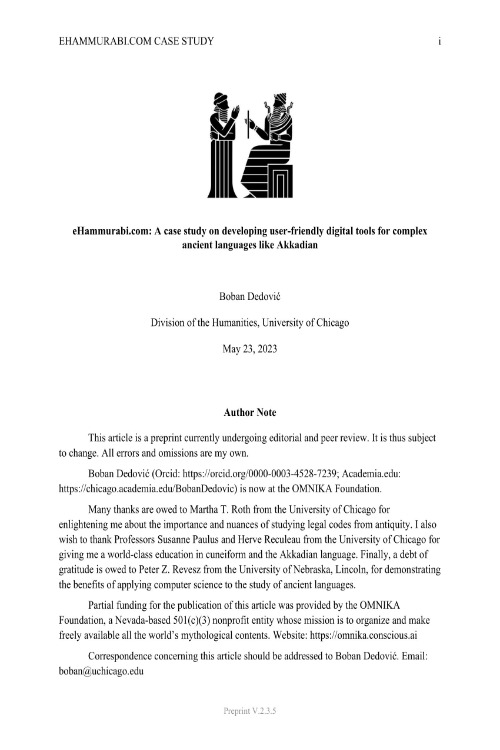
This case study outlines how the eHammurabi.com digital tool was built by describing its development from start to finish. The Law Code of Hammurabi was created in c. 1750 BCE and is well-known for being one of the oldest and most important legal texts in recorded human history.
Seminar paper · 2019
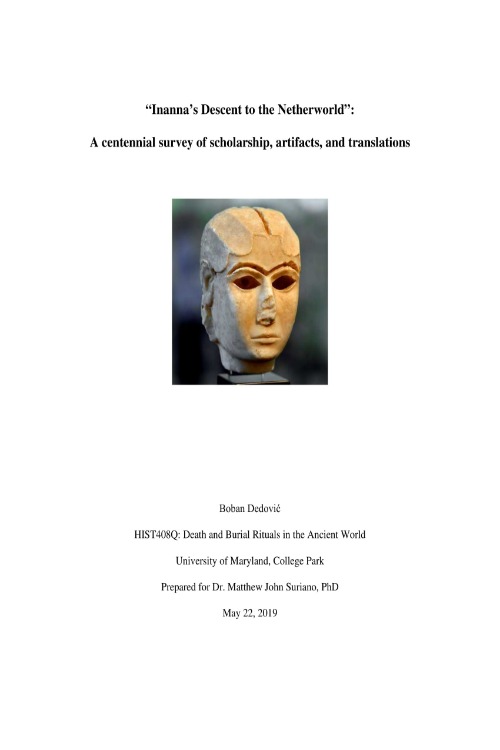
"Inanna's Descent" outlines all the scholarship related to the Sumerian afterlife myth named "Inanna's descent to the netherworld." The work contains a chronological survey of the scholarship, as well as an appendix of over forty artifact pictures and citation details. The work was produced by Dedović while he was studying death and burial rituals in the ancient world at the University of Maryland, College Park, MD.
Conference paper · 2022
"‘Minds’ in ‘Homer’" is a 2021 empirical research study on mental language in the Homeric epics which argued that the Iliad has much less mental language than the Odyssey, statistically speaking. Following peer review, the findings were accepted as a conference paper for the twelfth International Conference on the Mental Lexicon in Niagara-on-the-Lake, Ontario, Canada, from October 11–14, 2022.
Website · 1997
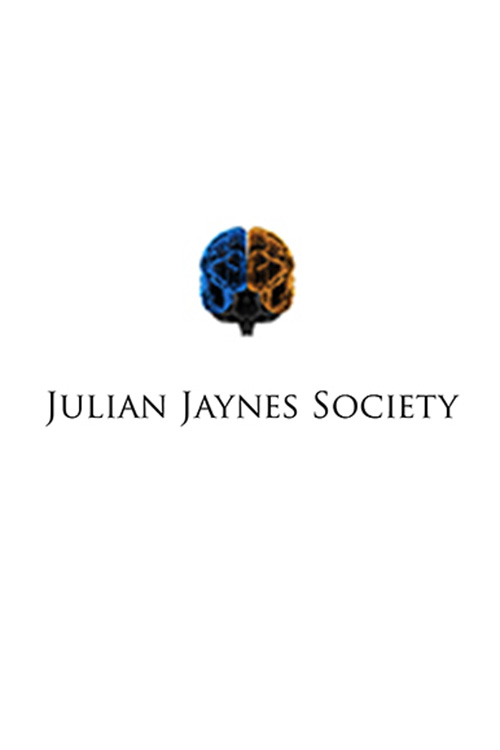
The "JJS" promotes the work of Julian Jaynes, a former Princeton professor who revolutionized ancient (and modern) psychology with his book, titled The Origin of Consciousness .... The book's contributions to ancient studies are legion, and cover the Homeric Epics (the Iliad and Odyssey), and more Greek and Akkadian myths. The society was started in 1997 by the prolific author Marcel Kuijsten, its Executive Director.
Website · 2021
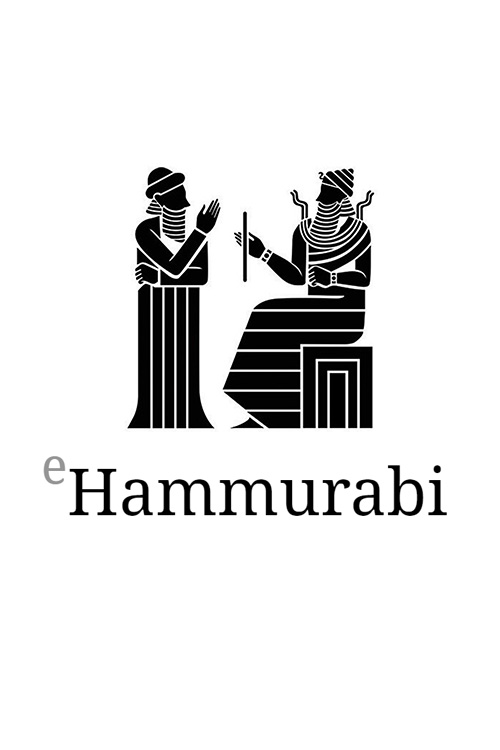
The Electronic Hammurbi website provides a digital version of the Law Code of Hammurabi; and includes the cuneiform signs, transliteration, normalization into Akkadian (Old Babylonian), and an English translation derived chiefly from Huehnergard's standard Akkadian grammar. The website was created by Boban Dedović on February 2021 while he was studying Mesopotamian Law at the University of Chicago, and is operated by the OMNIKA Foundation, a 501(c)(3) nonprofit based in Las Vegas, NV.
Conference paper · 2023
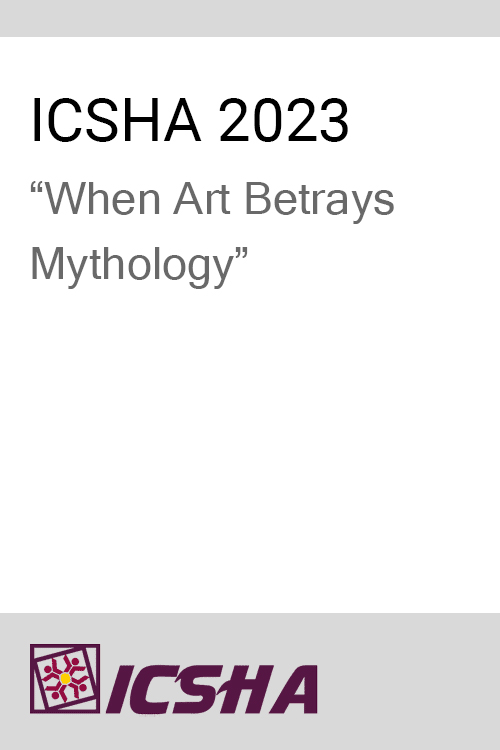
In "When Art Betrays Mythology," Dedović argued that Francisco Goya's Saturn painting is not representative of the mythological figure Cronus from Hesiod's Theogony. Instead, the author presents evidence to show that the painting's figure aligns with Grendel from Beowulf.
Book · 2022
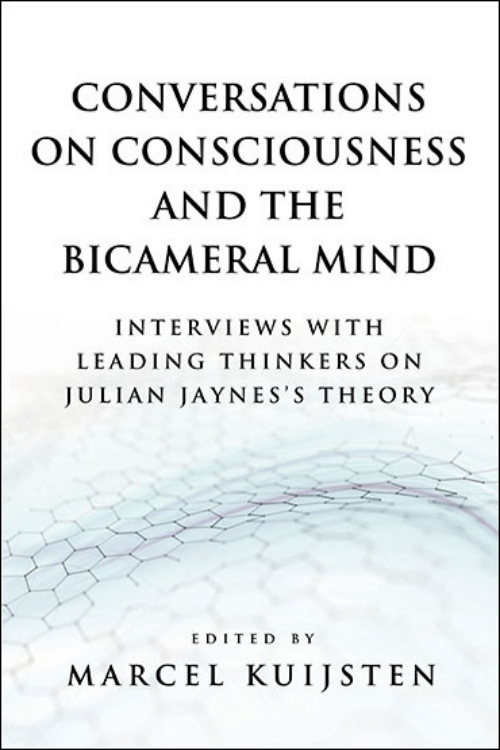
Conversations on Consciousness is a collection of transcribed interviews related to the theories of Julian Jaynes. The major focus of Jaynes' work was the origin of human consciousness. The work was compiled and edited by Marcel Kuijsten of the Julian Jaynes Society.
Library works
Book · 1982
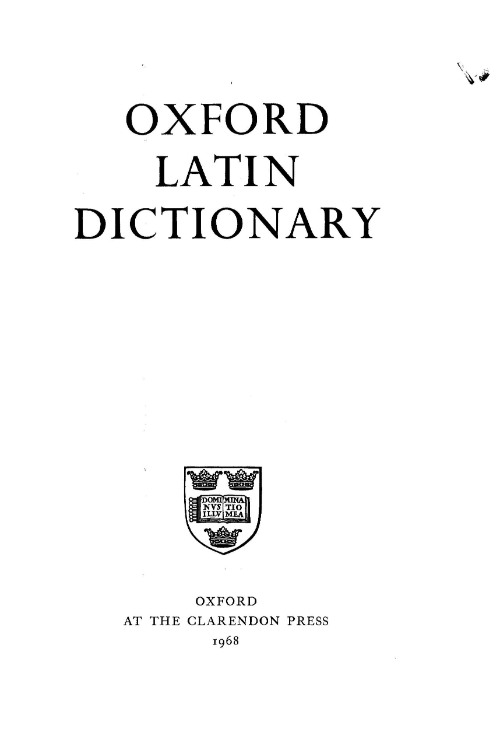
The Oxford Latin Dictionary (OLD) is one of the world's most comprehensive and reputable Latin to English dictionaries. The chief editor of the eight volume publication was Peter G. W. Glare. Eighteen other contributors are listed as supporting editors. The book is 2,126 pages long and contains almost 40,000 terms. It was intended to improve upon the shortcomings of earlier versions. Production of the eight volumes spanned from 1968 until 1982. Several revised editions were released: in 1996 and most recently in 2012.
Book · 1903
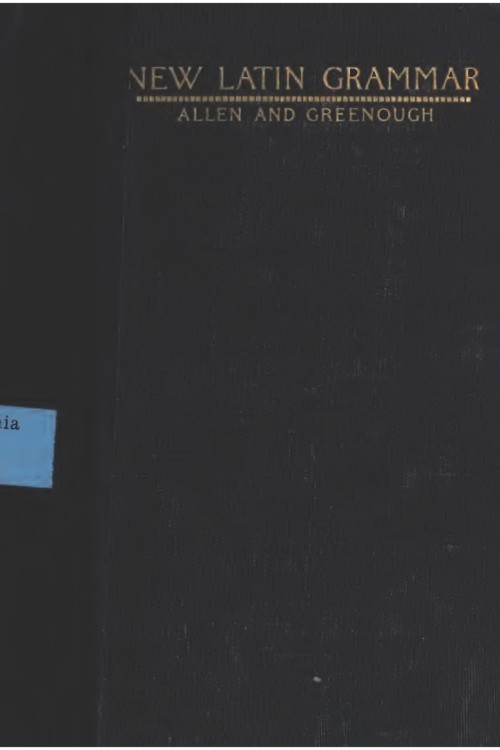
Originally published in 1888, the 1903 version of Allen and Greenough's New Latin Grammar is a Latin grammar book produced by Joseph H. Allen, James B. Greenough, et al. The book contains a comprehensive explanation of the mechanics of the Latin language. It was intended for students studying Latin in their first few years, mainly as a reference manual. Since then, it has become a favorite choice by scholars and students alike, despite being dated. This work is a newly published version of A Latin grammar for schools and colleges, which was produced by Allen and Greenough in 1872.
Book · 2005

Wheelock's Latin is a comprehensive Latin study textbook written for beginners. The original version was published in 1956 by Frederick M. Wheelock, an American professor who graduated from Harvard University with a Ph.D. Among scholars and students, Wheelock's Latin is considered to be an excellent resource for learning Latin vocabulary and grammar.
Ph.D. dissertation · 1939
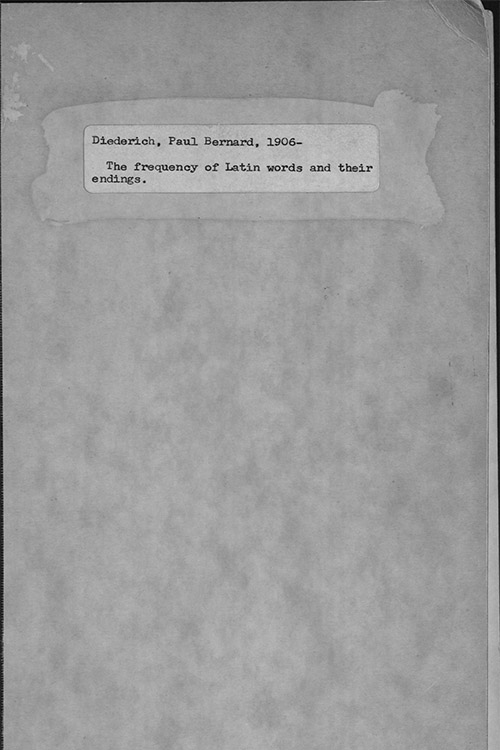
The Frequency of Latin Words and Their Endings is a published Ph.D. dissertation by Paul B. Diederich, released in 1939. Diederich compiled it while studying at Columbia University. The work contains a comprehensive list of Latin words and their frequency in various categories of writing. A list of the three hundred most common Latin words is also included. Since its publication, Diederich's list has been improved upon, especially with the help of computational linguistic techniques.
Book · 1903
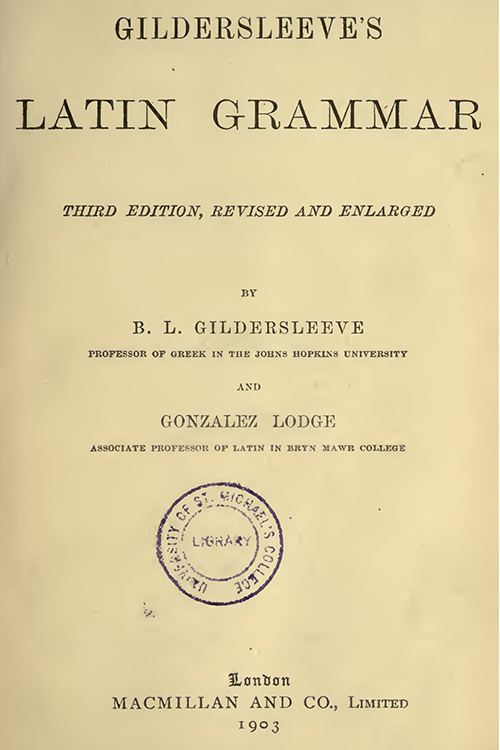
Originally published in 1895, the 1903 version of Gildersleeve's Latin Grammar was produced by Basil L. Gildersleeve and Gonzales Lodge. This book contains the foundational elements of Latin grammar, and is favored by students and scholars alike. Despite being dated, it is still considered an important component of Latin resources. The book contains examples, descriptions, and a thorough bibliography.
Book · 1981

Frequency Dictionary and Inverse Index of the Latin Language is a 1981 book originally published in French as Dictionnaire fréquentiel et index inverse de la langue latine. The book was published by the University of Liège's (Liège, Beligum) Laboratoire d'Analyse Statistique des Langues Anciennes, a department focused on doing statistical research on ancient languages. The authors of the publication are Louis Delatte, Suzanne Govaerts, Joseph Denooz, and Etienne Evrard. The 1981 publication, called the "LASLA list," is a benchmark work that provides a list of the most commonly used words in the Latin language, among other information.
Contributor
Cite this work
ChicagoDedović, Boban. "Allo: A Modern Digital Dictionary Platform for Ancient Languages." Paper presented at the 24th biennial conference of the Dictionary Society of North America, Boulder, CO, USA, May 31 – June 3, 2023.
